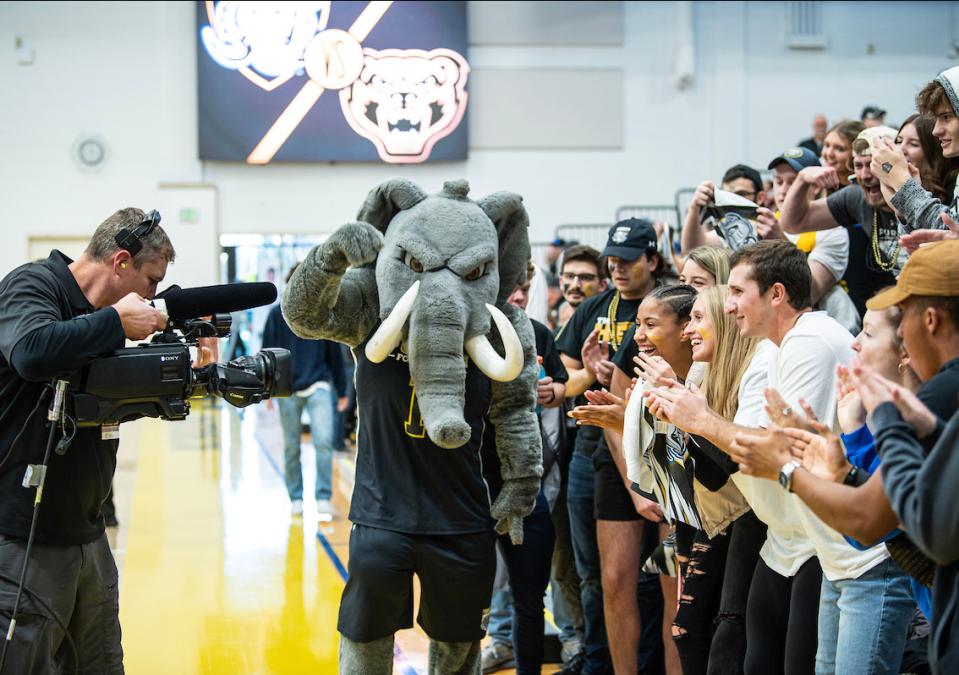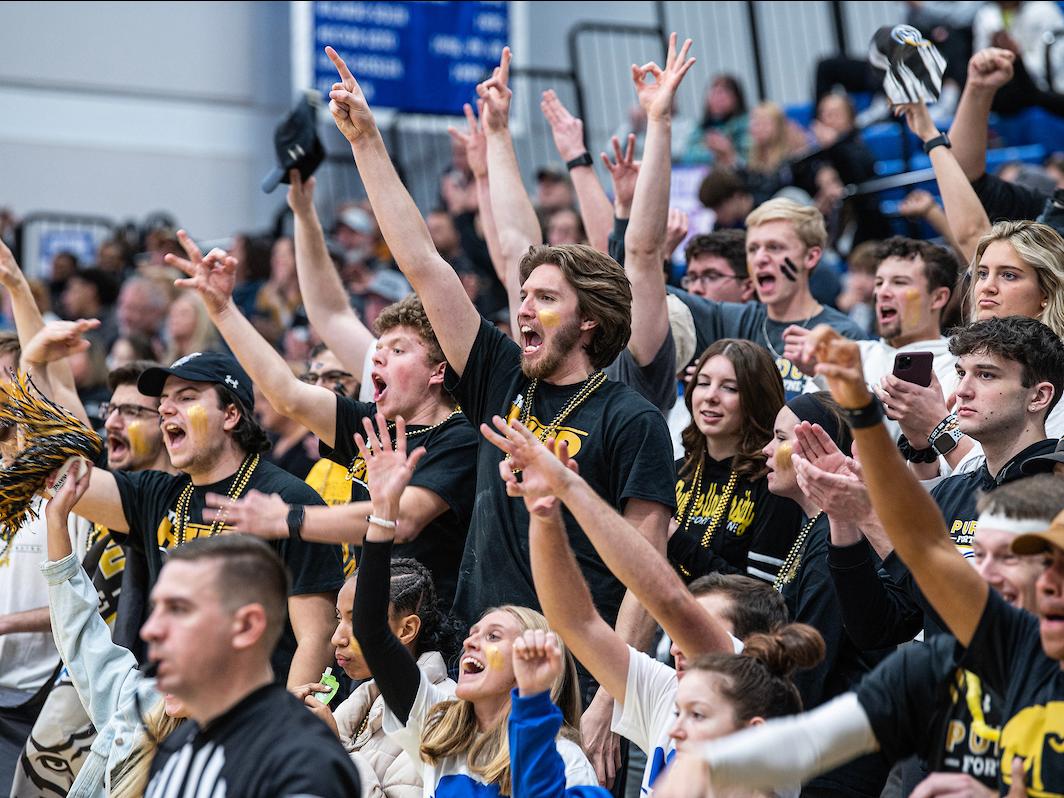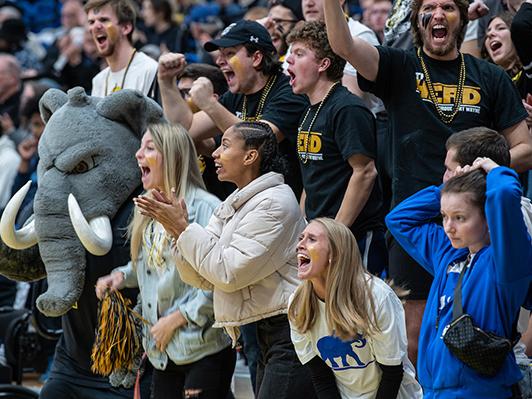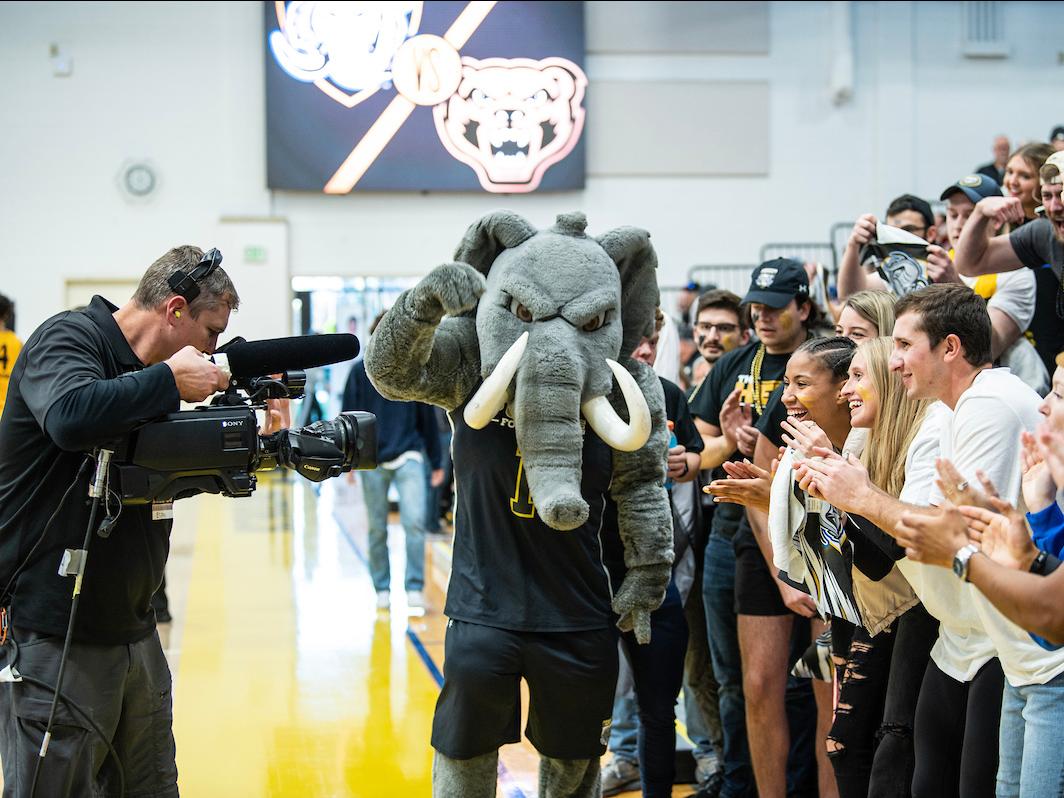
PFW Story
Behind-the-scenes teamwork vital for national TV game
After working the women’s basketball game Dec. 2, a win over Detroit Mercy, Aaron Johnson, the athletic department’s assistant director of media services, finally turned his mind off enough to get some shut-eye around midnight. But his well-earned rest during the first few hours of Dec. 3 was probably more along the lines of a glorified nap than a full night’s sleep; Johnson woke at 4 a.m. that Saturday with a to-do list already running through his head.
It was a big day for Purdue University Fort Wayne, the first-ever chance for it to host a national television broadcast from the Gates Sports Center. The PFW men’s game against Oakland would be shown on ESPNU.
On the surface, it all sounds fun and easy to make happen. After all, the athletics department hosts games televised on ESPN+ all the time. In reality, the difference between a smaller scale production for streaming and something broadcast from coast-to-coast is like night and day. The big boys were coming to take over the gym, provided the facility and university could supply what they needed.
When Gates opened in 1982, national broadcasts were not an option the same way they are at Memorial Coliseum, the usual home court of PFW men’s basketball.
Originally scheduled for 1 p.m. at the Coliseum, the contest against Oakland was selected by the Horizon League for its ESPNU conference game of the week. That meant a 3 p.m. tip-off, but the Coliseum already had a 7 p.m. Mad Ants game. The later PFW start left insufficient time for a court changeover, and the ESPNU schedule was not changing, so the game was moved to Gates.
An ESPN-contracted production company sent someone to check out the facility three weeks ahead of time. That person walked around with Assistant Athletic Director for Media Services Derrick Sloboda, Associate Athletic Director for Operations Michael Brown, and Assistant Athletic Director for Facilities and Operations Derrick Morrison. Input and assistance was also provided by Mike Mourey, Andrew White, and Daniel Palermo representing Information Technology Services, and Facilities Management electrician Allen Wise. Telops Systems Specialist Monty Stratton and Palermo were tasked with squaring away the phone lines.
“We were trying to figure out where they could get power and internet to the truck,” Sloboda said. “It took an hour and a half just to figure out where to park it. I was a little worried when the production guy would say, ‘We can’t do this.’ He said we had some stuff to worry about, but they could make it work. That’s when it became real. Oh, yeah, we can do this.”
But the production company representative left about a 30-item to-do list, including some parts that needed to be purchased. Special power lines, phone lines, and internet connections were also required, so Lead Technology Architect Mike Mourey and ITS were busy.
“Their assistance made it happen,” Sloboda said. “If they didn’t step up and meet ESPN’s needs, we wouldn’t have been able to get on the air.”
There were some complications such as Sloboda’s grandfather passing away, meaning he’d miss the game for the funeral in Wisconsin. There were also Thursday, Friday, Saturday, and Sunday home basketball games, along with Saturday’s season-opening Mastodon Opener track meet. The athletic media services team was also lacking a full-time video and technology coordinator and a graduate assistant.
The production truck arrived Friday morning and started setting up with a crew of 25. Producer Tony DeSanti drove in from Canton, Ohio, where he covered a high school football state championship game. Earlier in the week, he’d worked in Pittsburgh, Lexington, Kentucky, and Buffalo, New York.
“It’s hard, but it’s a lot of fun,” DeSanti said three hours before tip-off. “That’s not how every week goes. You might get two or three games in a week, you might get seven, or you might decide to take a week off. This is kind of a busy time of year because there are so many sports going on.”
The schedule won’t settle until after the January college football bowl season, DeSanti said. He lives in New York and works 170 games annually. A majority of the crewmembers work a minimum of 100 games and as many as 250 or 300 a year. Somehow, most are married and have families.
Typically, the truck arrives nine hours before tip-off, but ESPN allowed an extra day since Gates is unique for arenas they usually work in.
“It’s mainly just sightlines,” DeSanti said. “When they put together bigger arenas, they are doing it partly for broadcast in some capacity. This was not built for that at all. Our camera decks are different, so you have to be a little more creative with those challenges.
“The atmosphere will be fun for a game like this. You’re always trying to find a story to tell, and the atmosphere helps with that. It’s going to be a fun day.”
The previous ESPNU game ran long, so the PFW broadcast started after about three minutes had been played. The contest was close and entertaining for the crowd of 1,017 as the Dons won 79–73 in overtime.
Because the game ended late, there was no post-game interview, so everyone started packing equipment. The truck pulled out around 8 p.m., headed to another far-off location while the crew scattered. DeSanti left for Columbus, Ohio, to work a Sunday hockey game.
“Having ESPN on campus and not at the Coliseum was a culmination of other TV experiences I’ve had, and I can mark that box off my resume,” Sloboda said. “We’ve done it at the Coliseum before and it’s nice to know we can do it at the highest level here, on campus.”







